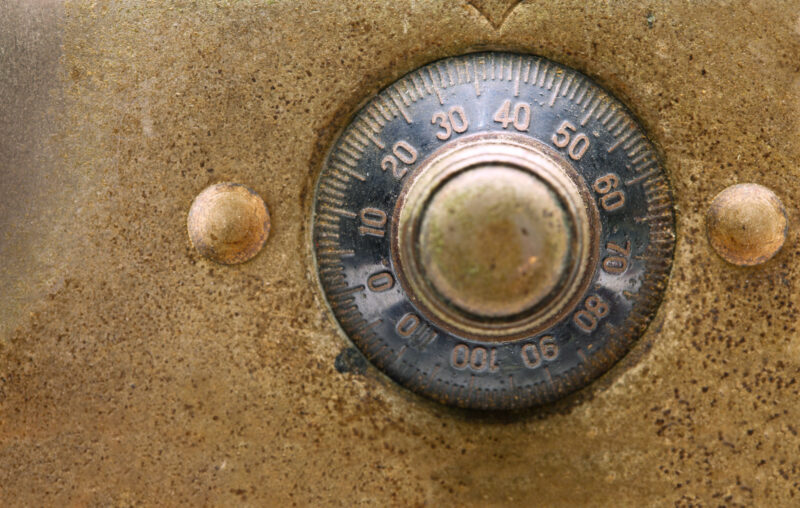Entrepreneurs Thrived During America’s Free Banking Era

Long before the Federal Reserve was established in 1913, private banking flourished in the United States, and entrepreneurs were a major reason why. Between 1837 and 1863, when private banking reached its apex, hundreds of private currencies circulated throughout the country. Entrepreneurs not only founded private banks, they also appraised private currencies—or banknotes—which helped to constrain banks from overissuing money.
Imagine you’re a traveling salesperson crossing state lines in the US circa 1850. You’re about to make a major business deal. The only problem: You aren’t sure whether you can sell your wares in exchange for an unknown, private currency. The bank that issues this currency could be printing excessive amounts of it in the hopes of making a quick profit. Private banks that sought to defraud their users by overissuing currency were often referred to as “wildcat banks.” These banks would often locate in remote and hard-to-reach places to prevent customers from redeeming their currency for gold or silver.
The criticism that private banking was subject to information gaps, leading to inflationary episodes and bank runs, was the main driving force behind the push to create the Federal Reserve. But when we look at the historical record, we quickly notice that private banking institutions flourished.
As more private banks sprouted during the 19th century, a growing demand for appraising private bank notes incentivized entrepreneurs to establish “exchange and brokers’ offices,” many of which doubled as lottery ticket hubs. These offices soon began to publish what were known as “bank note reporters,” which were periodicals that discounted each private currency according to a set of criteria, including distance from the issuing bank, risk of default, and the likelihood of that currency being counterfeit. Bank note reporters were subscription-based services that merchants and travelers consulted on a regular basis.
Riskier banks tended to trade at deeper discounts, lowering the value people attached to these bank currencies. New banks, for example, were more heavily discounted than older banks since the former lacked a reliable credit history. Gary Gorton, a professor of finance at Yale University, explains that riskier banks issued currencies that were indeed less attractive, often forcing many to go out of business. Gorton writes, “over 50 percent of the bad banks are detected within the first year of their existence.” Both the reputation of the bank and the redemption constraint, he observes, largely explain the success of the Free Banking Era.
In a meeting of the Milwaukee Bankers Club in 1896, one banker commented on the proliferation of bank note reporters:
The merchant in his store or the peddler on the prairies would as soon think of doing their business without scales, measure, or yardstick as without a ‘Thompson,’ or some other bank note reporter of recent date and a coin chart of all the known coins in the world.
Bank note reporters also had to be honest. In some cases, dishonest bank note reporters arose, overvaluing banknote prices and underrating the riskiness of banks. Often dodgy banks would bribe these entrepreneurs to overvalue their currencies. These fraudulent practices, however, were short lived as customers quickly caught on to such schemes.
After a Wall Street-based reporter overvalued the bills of two New York banks, however, The Weekly Herald announced the deception to the public. The article asserted that “these Wall Street prints have recommended every bank that has exploded during the last few years—and generally their recommendations have increased as the bank became weaker.”
Honest reporters, by contrast, garnered respect and loyalty from their clienteles. Asked by the President of the Jacksonville Bank, which was regularly insolvent, why he chose not to include his bank into his reporter, John Thomson responded, “I shall quote no banks that have been broken, and get revived; I’ll have nothing to do with any shin-plaster concerns. I mean to publish a correct and honest bank note list.”
John Thomson owned and operated one of the most widely circulated reporters in the country, Thompson’s Bank Note Reporter. At its height, nearly 100,000 copies were in circulation, far exceeding any of its competitors. For bank note reporters, as with any business, it paid to be honest.
Contrary to the claims that free banking created rampant inefficiencies, the historical record demonstrates that entrepreneurial forces were essential to closing information gaps and ensuring that the value of private currencies reflected the health and stability of the banks that issued them. While some unscrupulous bank note reporters stumbled their way into the market, they didn’t survive for very long.
According to one experienced trader, “correct information is what people want.” And if any reporter’s “object is to sustain a certain clique, or party, or certain banks… and to debate or discredit others that may be their rivals, then they cannot receive the confidence of the public, and are altogether unreliable.”
Entrepreneurs thrived during the era of free banking in the United States, even with restrictive banking laws, which handicapped private banks from being more efficient. Today, as calls to create central bank digital currencies grow louder, we should remember the coordinating market forces that emerge when money is left to be exchanged by the invisible hand.










